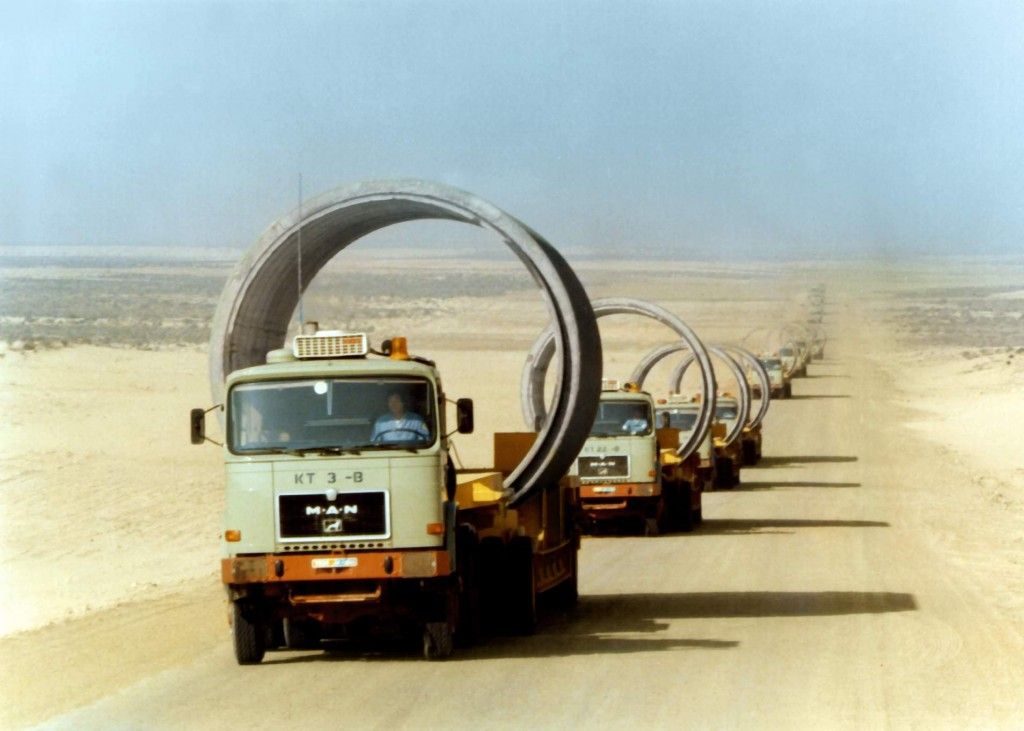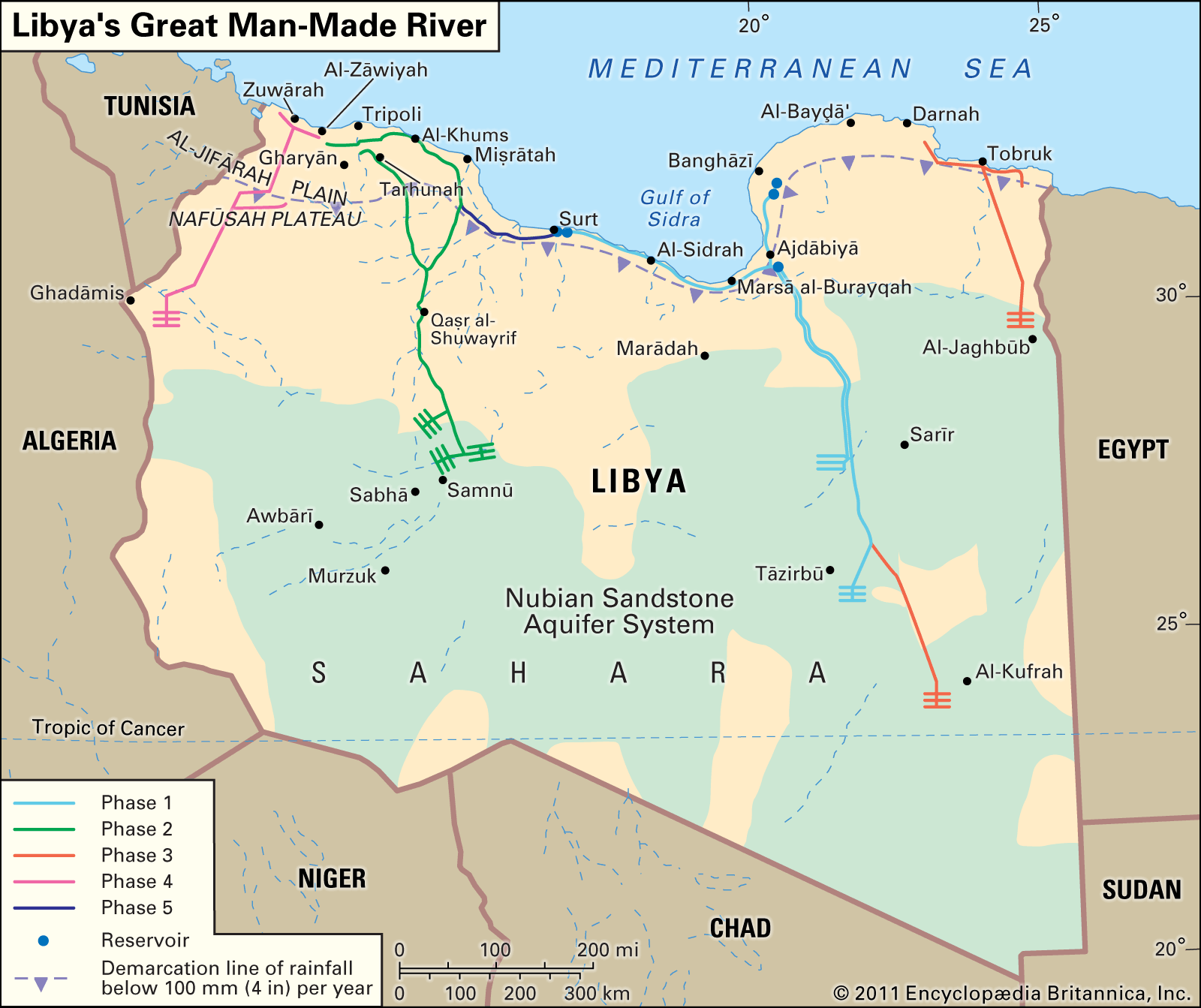Drinking Water from the Desert: Libya's Major Irrigation Project
Libya, a country often associated with its oil reserves, has another priceless treasure beneath its desert - water. The world's largest reservoir of fossil fresh water lies beneath the Libyan desert floor. This water is pumped into the country through an impressive pipeline system known as the Great Man-Made River (GMMR), both for drinking water needs and for agriculture. The GMMR is the largest irrigation project in the world.

Some highlights of the project:
- Scale and Capacity: The GMMR currently transports nearly 2.5 million cubic meters of water daily via an underground network of pipelines spanning 1,600 kilometers. This system supplies 70% of the fresh water consumed in Libya.
- Discovery and Development: The idea for the project arose in the 1950s when oil companies discovered huge reserves of water while drilling in the Libyan desert. These fossil freshwater reserves had been stored underground for thousands of years.
- Financing and Construction: The project was realized without financial help from other countries or bank loans. The total cost of the GMMR to date is more than $36 billion. Taxes on tobacco and gasoline as well as oil revenues helped finance it.
- Environmental Impact: The project has both positive and negative impacts on the environment. The positive impacts include the increase in green zones in the north and west of the country, which helps curb desertification. However, there are also concerns about the environmental impact in the desert where the fossil water is extracted and the possible salinization through evaporation.
- Future of Water: There are differing opinions on how long the water from the GMMR will last. Some experts believe the reserves could be exhausted in 250 years, while others estimate they could last up to 650 years.

The GMMR project is an impressive example of how a country can use its natural resources to meet the needs of its population. It also shows the importance of sustainable management and planning for the future.
Additional Information:
The Nubian Sandstone Aquifer System, from which the GMMR's water comes, is the largest fossil freshwater reservoir in the world. It covers an area of about two million square kilometers and lies beneath the Sahara in the territories of Libya, Chad, Egypt and Sudan.